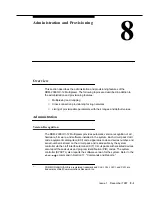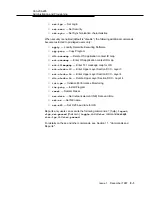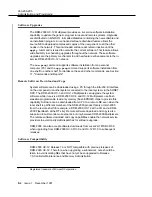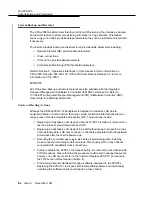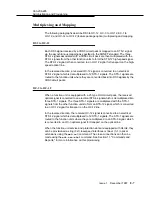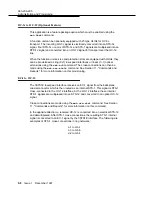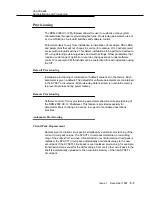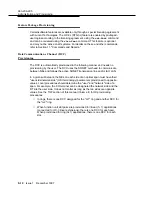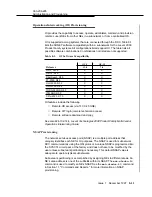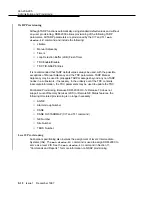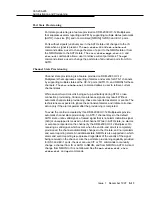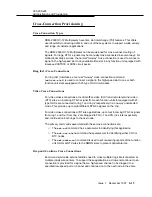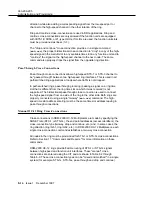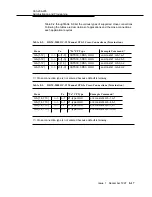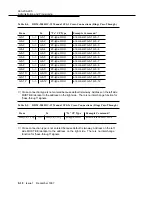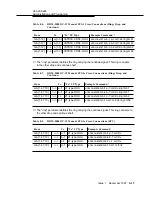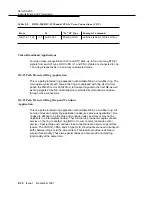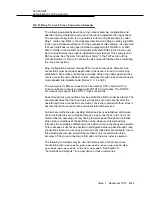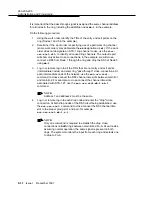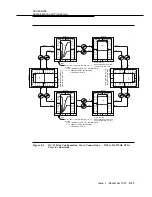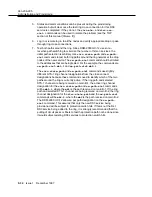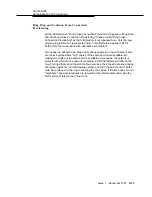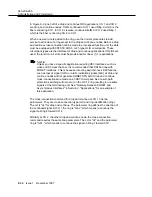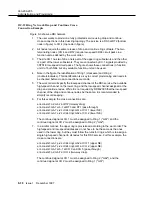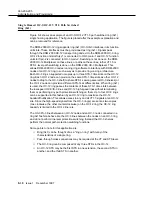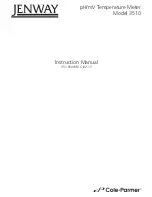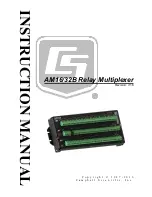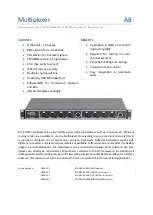
363-206-295
Administration and Provisioning
Issue 1
December 1997
8-15
Cross-Connection Provisioning
8
Cross-Connection Types
8
DDM-2000 OC-12 Multiplexers have time slot interchange (TSI) features. This offers
users flexibility in directing traffic in and out of these systems to support a wide variety
and range of customer applications.
The DDM-2000 OC-12 Multiplexer can be provisioned for cross-connect routing of
signals. For rings, STS-1 signals may be manually cross-connected in several ways. For
bidirectional drop services, the normal "twoway" cross-connection is used to connect a
signal in the high-speed slot to any available time slot in any function unit equipped with
low-speed 3STS1E or 3DS3 circuit packs.
Ring (0x1) Cross-Connections
8
For ring (0x1) interfaces, a manual "twoway" cross-connection command
(
ent-crs-sts1
) is used to connect a signal in the high-speed slot to one or both
function unit slots equipped with 21-type OLIU circuit packs.
Video Cross-Connections
8
For video cross-connections at central office video (COV) and remote terminal video
(RTV) sites, an incoming STS-3c signal from each function unit slot equipped with 21-
type OLIUs are connected to ring 1 and ring 2 respectively in a one-way unprotected
mode. This provides up to eight different STS-3c signals on the ring.
For video cross-connections at RT site applications, up to four incoming STS-3c signals
from ring 1 and four from ring 2 are dropped to FN ()-1 and FN ()-2 slots respectively
and continued on both rings to the next node.
The primary commands associated with these cross-connections are:
■
The
set-oc3
command has a parameter for identifying this application
■
The
ent-crs-sts3c
command has parameters for identifying either COV or
RTV nodes
■
The
set-state-oc3
command is used to set unused input ports of the function
unit OLIUs at RTV sites to the NMON state to prevent optical alarms.
Drop and Continue Cross-Connections
8
End-to-end survivable service facilities need to cross multiple rings interconnected at
multiple (dual) wire centers. To support these applications, a drop-and-continue cross-
connection is provided for a signal from a high-speed channel to be dropped to a
specified low-speed port or channel and continued on to the next node in the same

